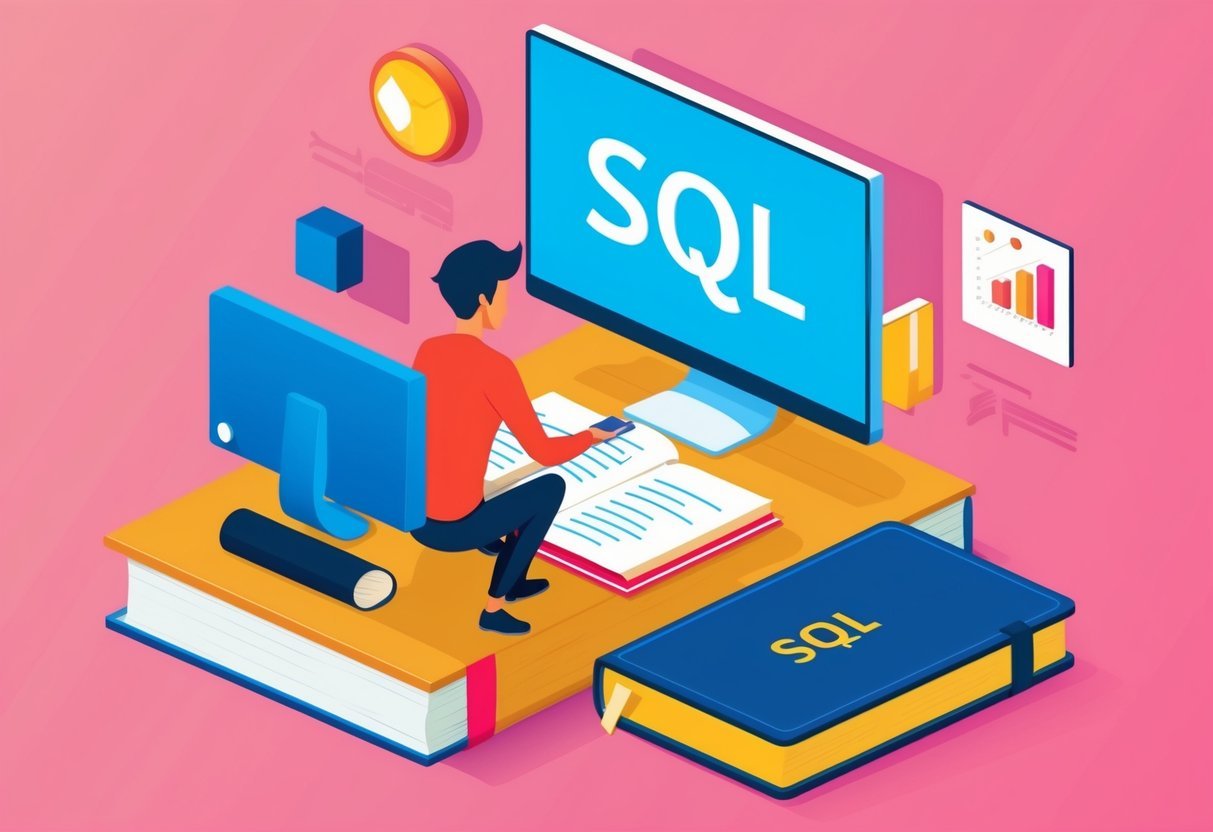Understanding DAX and Its Core Concepts
DAX, or Data Analysis Expressions, is a formula language used in data analysis software like Power BI and Excel. It allows users to perform calculations and data manipulations with ease.
Key concepts include understanding the basics of DAX syntax, the importance of context, and utilizing DAX calculations effectively.
What Is DAX?
DAX is a specialized language designed for use in data analysis. It extends the capabilities of Excel formulas and provides a powerful toolset for business intelligence. With DAX, users can create calculations that are more complex and versatile than standard formulas.
The main goal of DAX is to help in creating measures and calculated columns that can aggregate and filter data efficiently.
DAX Syntax Essentials
The syntax of DAX is similar to that of Excel formulas but with added functionality. Formulas in DAX are built using functions, operators, and constants.
Understanding syntax essentials is crucial for writing effective DAX formulas. For example, DAX functions often require specific arguments.
Proper use of parentheses and attention to detail in formula structure are vital for ensuring that calculations process correctly without errors.
Understanding Context in DAX
Context is a fundamental part of DAX that affects how calculations are executed. Two main types of context are filter context and row context. These contexts define the data subset that a formula operates on.
Context can be influenced by the data model, the visualization environment, or the specific formula configuration.
Mastery in managing context is essential for accurate DAX calculations, making this a cornerstone concept in learning DAX.
The Role of Filter Context
Filter context refers to the set of filters that apply to data when a DAX formula is executed. It’s crucial for calculating accurate results in reports.
Every visual in a report can alter the filter context dynamically. Understanding how to manipulate filter context is important for customizing reports and achieving the desired results.
Functions such as CALCULATE help modify filter context, allowing users to apply or clear filters in specific ways.
Row Context and Its Implications
Row context occurs when a formula has access to data in a single row at a time, often seen in calculated columns. This concept is different from filter context, which deals with table-wide data.
Grasping row context is key for creating calculations that summarize or evaluate expressions on a per-row basis. Functions like EARLIER or RELATED often rely on understanding row context to yield correct calculations.
Introduction to DAX Calculations
DAX calculations are used to create measures and calculated columns that provide valuable insights from data. DAX calculations can include aggregations, filters, and more complex mathematical operations.
Measures are dynamic calculations used to perform evaluations on large datasets quickly. Calculated columns are static and part of the data model.
Learning how to build efficient DAX calculations involves understanding data structure and context interactions.
These can include the application of functions like SUM, AVERAGE, and CALCULATE. Properly combining these elements results in powerful analysis capabilities that enhance business intelligence solutions.
The CALCULATE Function
The CALCULATE function in DAX is a powerful tool used to change filter contexts and create complex calculations in data analysis. It allows users to apply filters, making it essential for accurate data modeling and insight generation.
Exploring CALCULATE Function Basics
The CALCULATE function is unique in how it modifies context for data evaluations. It recalculates expressions within a modified filter context, allowing users to derive new insights.
This function requires at least one expression and can accept multiple filter parameters. The ability to adjust filters using CALCULATE is especially useful for making precise data selections.
It’s essential in scenarios where evaluating a measure in a different context is necessary.
Using CALCULATE in Measures
Measures are vital components in data modeling and analysis. The CALCULATE function plays a key role in defining them by enabling context alterations.
By utilizing this function, users can define measures that present the same data points, but under different conditions.
For instance, changes in sales data based on particular regions or time periods can be calculated using this function. This flexibility provides precise and relevant metrics.
Importantly, when using CALCULATE with measures, it delivers results that align with specific analytical needs, enhancing clarity and insight in reports or dashboards.
Modifying Filter Context with CALCULATE
The ability to modify filter contexts is one of the major assets of the CALCULATE function. When used, it overrides existing filters, which is useful for tailored analysis.
This feature becomes critical when comparing different data segments or testing scenarios within the same dataset.
By manipulating the filter context, CALCULATE helps in isolating variables and examining their impact independently. For example, calculating average sales excluding certain products enhances targeted marketing strategies.
Mastery of these filter adjustments allows for detailed and customized analysis, providing a deeper understanding of data trends and patterns.
Row versus Filter Context in CALCULATE
Understanding the difference between row and filter context is essential for using CALCULATE effectively. Row context refers to the current row in a table, while filter context includes any filter restrictions applied to data.
The CALCULATE function uses the filter context to deliver specific results.
In scenarios involving multiple tables, maintaining distinctions between these contexts is important for accurate data calculations.
The CALCULATE function bridges these contexts, allowing for comprehensive data manipulation. Learning to navigate these contexts aids in performing detailed analyses, ensuring that results accurately reflect the intended data relationships and conditions.
DAX Functions for Filtering
DAX functions for filtering are essential tools to control which data is considered in calculations. Key functions include FILTER, ALL, and KEEPFILTERS, each providing different ways to manage and refine data sets.
Introduction to Filter Functions
Filter functions in DAX are crucial for managing how data is sliced and diced in reports. They allow users to control which data is included in calculations.
These functions work by applying conditions to data sets, which helps in isolating specific data points required for analysis.
Common filter functions like FILTER, ALL, and KEEPFILTERS modify data context in a flexible manner. They are often used in conjunction with other functions to refine calculations and achieve precise results.
Understanding these functions enables users to create detailed and accurate data models.
The FILTER Function and Its Uses
The FILTER function is a powerful tool that enables users to apply conditions to data tables. By using FILTER, one can return a table that meets specific criteria.
This is particularly useful when you need to include only certain data in your calculations.
For instance, applying FILTER in DAX means you can target specific rows in a data table based on logical conditions. The ability to use a Boolean expression means users can filter out data that doesn’t meet the specified criteria.
This function is essential for creating dynamic calculations and reports, as users can control the data scope efficiently.
Combining FILTER with Other Functions
Combining FILTER with other DAX functions can significantly enhance its power. By intertwining FILTER with functions like CALCULATE, users can create more precise data calculations and analyses.
This approach lets users adjust the filter context dynamically.
For example, embedding FILTER within CALCULATE allows the application of conditions to measures, refining calculations in real-time.
Additionally, integrating FILTER with the OR function can help evaluate multiple conditions, returning data that meets any of the specified criteria.
This combination is invaluable for tailoring data models to specific analytical requirements.
Using ALL to Remove Filters
The ALL function serves as a crucial tool when there’s a need to remove filters applied to a dataset. This function returns all rows in a table or column, ignoring existing filters.
It’s often used to calculate data unaffected by filters set in the report, providing a broader context.
A common use case for ALL is when calculating total sales in a dataset, disregarding specific regional filters. Another scenario is using ALL to calculate percentages relative to the entire dataset, not just a filtered subset.
By understanding how to apply ALL, users can unlock more flexibility in their data analysis work.
Keeping Filters with KEEPFILTERS
KEEPPFILTERS is key when maintaining certain filters even after using CALCULATE, which might otherwise alter them. This function ensures that any existing filters in context are retained, preserving analytical intents.
By using KEEPFILTERS, users can blend additional conditions without losing initial filters.
For instance, maintaining product category filters while analyzing monthly sales can ensure the analysis remains accurate to the original data context.
This is essential when it is crucial to maintain consistent filter contexts and avoid unwanted data changes.
Creating and Using Measures in DAX
Learning to create and use measures in DAX is essential for effective data analysis. This involves understanding how to define measures, utilize aggregate functions, implement time intelligence, and leverage context transitions for dynamic analysis.
Defining Measures
Measures in DAX are used to perform calculations on data. They are dynamic, calculated based on the data context, and do not store data themselves.
A measure can calculate totals, averages, or other statistics. For example, a simple measure could calculate the total sales by summing up the sales column in a dataset.
To create a measure, one can use calculated DAX formulas. These can be written in tools like Power BI, Excel, or SQL Server Analysis Services.
It’s crucial to define a clear data context, as measures will adapt to the data they are surrounded by.
Common Aggregate Functions
DAX includes several functions to perform common aggregations. These functions help to summarize data quickly.
- SUM: Adds up all values in a column.
- AVERAGE: Shows the mean of numbers in a data set.
- COUNT: Tallies the number of entries in a column.
These functions are vital for creating meaningful insights from raw data. Each one can be used within a measure to provide dynamic results that change based on filters and slicers applied in reports.
Time Intelligence Measures
Time intelligence functions in DAX help track and compare values over time periods, which is crucial for trend analysis. These functions include TOTALYTD, SAMEPERIODLASTYEAR, and DATESYTD. They allow measures to reflect changes over months, quarters, or years.
For instance, a measure like TOTALYTD([Total Sales], ‘Date’ [Date]) calculates the year-to-date sales total. These calculations are essential for businesses to compare performance and trends across different periods.
Dynamic Measures with Context Transition
Context transition is a key concept in DAX that makes measures highly dynamic. It allows a row context to become a filter context, impacting how measures calculate results.
The CALCULATE function is often used to switch contexts.
For example, when using CALCULATE([Total Sales], ‘Product’ [Category] = “Electronics”), a dynamic measure adapts to only show the sales data for electronics.
This is powerful for creating interactive reports where data context changes based on user interactions, such as slicers or filters.
Advanced DAX Functions
DAX (Data Analysis Expressions) is important for advanced data modeling in tools like Power BI and Excel. This section explores core aspects of DAX, including handling iterators, utilizing time intelligence, working with text fields, and connecting related tables. Each topic is crucial for maximizing the potential of DAX in complex data operations.
Working with Iterator Functions
Iterator functions like SUMX, AVERAGEX, and MAXX are a powerful aspect of DAX. These functions iterate over a table, perform calculations, and return results. They allow for row-by-row computations, enabling users to apply custom logic.
For users dealing with large datasets, iterators are essential to calculate running totals or moving averages.
These functions can simplify complex calculations by replacing nested formulas. When applying SUMX, values in each row are multiplied before summation, allowing for nuanced data analysis.
This feature helps to avoid bulky formula constructs and supports more readable code. Iterators are especially useful when the calculations require different logic for different rows in the data set.
Time Intelligence in DAX
Time intelligence functions enable dynamic analysis of time periods. Functions like DATEADD, TOTALYTD, and SAMEPERIODLASTYEAR provide tools to calculate totals and averages over specific time frames.
These functions simplify deriving insights across fiscal years, quarters, and months. They allow users to easily compare current performance with past periods, supporting robust trend analysis.
For example, SAMEPERIODLASTYEAR lets users see how a given period this year compares with the same period last year. Time intelligence is essential for businesses tracking year-over-year growth and periodical performance.
Text Functions and Their Utility
Text functions in DAX include CONCATENATE, LEFT, and SEARCH. These functions manipulate strings to extract or modify text data.
They are vital for tasks that involve text formatting, like cleaning data or creating new fields based on existing text columns. For instance, CONCATENATE can combine first and last names from separate columns into a full name column.
Also, SEARCH helps in locating specific substrings within a text field, proving useful in filtering and sorting tasks. These functions, while often less discussed than numerical functions, are critical for managing and analyzing text data efficiently.
Using DAX for Related Tables
When working with data models, DAX functions such as RELATED and RELATEDTABLE enable users to access data from other tables. This facilitates creating complex relationships without needing to merge tables physically.
These functions are crucial for pulling information like customer names from a separate customer table into a sales table. They maintain connections dynamically, ensuring that changes in one dataset automatically reflect in related reports.
RELATED fetches a single value, while RELATEDTABLE retrieves a table, offering flexibility in data retrieval and processing. Understanding how to use these functions effectively expands the capability to construct more interlinked and responsive data models.
Crafting Calculated Columns and Tables
Calculating columns and tables in data models can enhance data analysis. These techniques allow users to generate meaningful insights by performing complex calculations within datasets.
The following sections detail the process of creating calculated columns and tables, as well as optimizing data models with these techniques.
Creating Calculated Columns
Calculated columns are a powerful tool in data analysis, allowing users to perform row-by-row calculations within a table. They are particularly useful when a new column is needed to evaluate data that isn’t included in the existing dataset.
For instance, a sales data table can benefit from a calculated column that multiplies quantity by price to determine revenue. To create a calculated column, it is crucial to have a clear goal for the outcome and understand which DAX functions will be used.
This ensures that the calculated column is both meaningful and efficient. The use of functions like IF(), SUM(), or DIVIDE() can greatly enhance the versatility of calculated columns.
Calculated columns are stored in the data model and consume storage space. Therefore, users should ensure that only necessary columns are created to maintain optimal performance.
Designing Calculated Tables
Calculated tables are tables generated by DAX formulas that can extend the existing data model. These tables are created based on existing data but are recalculated whenever the data refreshes.
This is extremely helpful for summarizing data or performing complex data manipulations that aren’t possible through regular queries. The creation of calculated tables involves using DAX functions such as GENERATE() or FILTER().
By leveraging these functions, data can be reshaped to meet specific analytical needs, like joining tables or creating subsets of data. Creating a calculated table requires a balance between utility and processing cost.
While they are flexible and powerful, each additional calculated table can increase the computational load during data refreshes.
Optimizing Data Models with Calculations
Optimizing data models using calculated columns and tables involves improving performance and ensuring the model’s scalability. Best practices include only creating calculated elements when absolutely necessary and ensuring they are as efficient as possible.
Calculated columns and tables should be properly documented within the model. This includes noting which DAX functions are used and the intended business logic.
Additionally, reviewing and optimizing DAX formulas for efficiency will help maintain a responsive data model. Performance can be further enhanced by understanding data cardinality and the relationship between tables.
This knowledge helps minimize resource usage, keeping models efficient and quick to respond to user queries.
Working with Aggregation Functions
In the world of DAX, aggregation functions play a key role in handling data. These functions help summarize and analyze datasets, giving users insights into their data. This section dives into how to use essential aggregation functions effectively.
SUM and SUMX – When to Use Each
The SUM and SUMX functions are crucial in DAX, yet they serve different purposes. SUM is a straightforward function that totals up all the values in a single column. It’s efficient and easy to use for basic calculations where row context is not needed.
For example, adding up total sales from a sales column would be a classic case to use SUM. On the other hand, SUMX is more flexible. It allows for row-by-row calculations before summing up the results.
This is valuable when you need to perform operations on each row, like multiplying quantity by price, before summing. In scenarios involving expressions or calculated columns, SUMX is the preferred choice.
It evaluates each row and then aggregates the final results for deeper insights into your dataset.
Calculating Averages with AVERAGEX
AVERAGEX is vital for calculating the average of a set of values based on a specific expression. This function iterates over a table, evaluates the expression for each row, and then averages the results.
Compared to a simple AVERAGE function, AVERAGEX offers more flexibility by allowing computed values for each row. For instance, when determining the average revenue per order, AVERAGEX will first compute the total revenue for each order and then calculate the average of these totals.
This method produces more accurate averages, especially when working with complex data models where simple averages may not suffice.
Understanding DISTINCTCOUNT
DISTINCTCOUNT is essential for counting unique values in a column. This function is particularly useful when datasets contain duplicates, and the goal is to determine the number of unique entries.
For example, in a customer database, DISTINCTCOUNT could be used to count the number of distinct customers who made a purchase. It efficiently handles large datasets and provides a precise count of unique items, which is critical for accurate reporting and analysis.
Divide Function for Creating Ratios
The DIVIDE function is designed for creating ratios and handling division safely. It provides an alternative to the traditional division operator by incorporating error handling.
This is useful in preventing errors that occur with direct division, such as division by zero. When creating ratios like profit margins or efficiency rates, the DIVIDE function ensures that any attempt to divide by a zero or missing value is managed gracefully.
This results in cleaner, error-free calculations, ensuring reliable and accurate analysis of financial and operational metrics.
Mastering Context Transition and Relationships
Understanding context transition and relationships in DAX is crucial for creating powerful and accurate data models. Context transition involves changing row context into a filter context, while mastering relationships helps manage and control data interactions. Here’s how to harness the power of these DAX features.
Deep Dive into Context Transition
Context transition is a key feature in DAX allowing calculations to change from a row context to a filter context. This happens when functions like CALCULATE or CALCULATETABLE are used. They apply the current row context as a filter.
For instance, in a sales table, CALCULATE can transform row values into filters that sum sales amounts for specific regions or products. It’s essential for adjusting data perspectives dynamically. Without proper context transition, DAX measures may not yield expected outcomes.
Proper understanding ensures accurate data summaries. Practicing various CALCULATE scenarios enhances proficiency, building confidence in model accuracy at different granularity levels.
Exploring Relationships with USERELATIONSHIP
USERELATIONSHIP is a DAX function that manages inactive relationships within a data model. In scenarios where multiple relationships exist, USERELATIONSHIP allows switching which relationship is active.
This is particularly useful in time intelligence calculations where both date and ship date might relate to sales. By activating user-specified relationships, different analyses can be achieved without altering the data model structure.
Mastering USERELATIONSHIP helps users implement complex analysis scenarios with ease, improving report depth and versatility. Furthermore, it encourages exploring data from multiple angles, enriching insight gathering.
Translating Relationships into DAX Logic
Understanding how relationships translate into DAX logic is fundamental. Relationships in a data model dictate how tables interact and exchange data.
In DAX, these are defined as one-to-many or many-to-many relations. For effective logic translation, it is important to comprehend the natural and enforced hierarchical paths.
DAX interprets these relationships while performing calculations, allowing data values to filter correctly. Structured relationships ensure data joins are accurate and visualizations are meaningful.
Familiarity with translating these relationships into efficient DAX can significantly enhance data storytelling, ensuring each data point fits the broader analytical picture.
Utilizing Conditional Logic in DAX
Conditional logic in DAX allows users to create formulas with flexibility by evaluating conditions and returning different results based on those conditions. This section explores the use of IF statements, handling errors with conditional logic, and creating complex conditions with nested IFs.
IF Statements and Logic Flow
IF statements are a fundamental aspect of conditional logic in DAX. They are used to test conditions and execute different actions based on the result. An IF statement in DAX is structured as IF(condition, true_result, false_result).
This function evaluates the condition and returns the second argument if true, or the third if false. For example, to categorize sales performance, a formula might check if sales exceed a certain amount.
Using IF statements, businesses can automate decisions and simplify data models. Mastering these functions is essential for enhancing the efficiency of data analysis processes.
Handling Errors with Conditional Logic
When building complex formulas, handling potential errors is crucial. DAX provides several ways to manage these errors with conditional logic.
Functions like IFERROR can be employed to catch errors without interrupting the dataset’s flow. IFERROR(value, value_if_error) allows users to specify a return value if an error is found, ensuring smooth operation.
Correct error management with these functions enhances the reliability of reports. Without handling errors effectively, incorrect results may skew the data analysis. By using conditional logic, DAX ensures that errors are addressed, keeping data insights accurate and meaningful.
Complex Conditions and Nested IFs
Nested IFs allow the creation of more complex conditions in DAX by embedding one IF statement within another. This approach lets users evaluate multiple conditions sequentially.
An example of nested IFs could be determining pricing strategies based on multiple sales thresholds. Employing nested IFs, users can create intricate logic paths that address various scenarios, enabling detailed data insight.
Although powerful, it is important to use nested IFs judiciously. Too many nested conditions can complicate formulas and make them harder to maintain. Simplifying complex logic whenever possible maintains clarity and efficiency.
Integrating DAX with Power BI and Excel
DAX is an essential tool for data analysis and plays a vital role when integrated with Power BI and Excel. Each platform has unique features that make DAX a powerful component for creating dynamic and insightful reports.
Utilizing DAX in Power BI Desktop
Power BI Desktop leverages DAX to enhance visualizations through calculated columns and measures.
Users can insert DAX formulas into their data models to gain insights. CALCULATE is a central function, allowing users to adjust filter contexts and perform dynamic calculations.
Power BI’s interactive reports benefit from DAX. For example, sales performance across different months can be easily tracked using a simple DAX formula. New users find this feature intuitive, helping them harness the full capabilities of Power BI.
Power BI Desktop supports rich visual data representations, which can be enhanced by DAX functions. This creates a seamless experience for those needing to interpret complex data sets.
DAX Formulas in Excel
DAX in Excel is utilized primarily within Power Pivot, providing robust analytical capabilities. By using DAX, Excel users can create calculated fields and KPIs to achieve more advanced data analysis.
This feature is especially beneficial for users managing extensive datasets.
Functions like CALCULATE allow users to adjust the data context, enabling complex aggregations and metrics. With these tools, Excel becomes more than a spreadsheet, morphing into a powerful analytical tool. Users find DAX formulas enhance productivity, helping them derive meaningful insights.
Moreover, Excel’s familiar interface provides comfort for many users, making the transition to using DAX functions smoother.
Synergy between Power Pivot and DAX
The integration of DAX within Power Pivot allows for complex data modeling and analysis.
Power Pivot enhances Excel with its ability to manage large data sets efficiently, while DAX adds the functionality for complex calculations.
DAX functions provide advanced data manipulation capabilities, such as calculating time intelligence metrics.
Users can model data with greater flexibility and precision. This synergy creates a potent combination for business intelligence.
Using DAX with Power Pivot, businesses can create robust models that provide deeper insights into sales trends and customer behaviors. The powerful combination of these tools transforms traditional data analysis approaches into more sophisticated and dynamic processes, allowing for actionable business intelligence.
Optimizing Performance in DAX Queries

Improving performance in DAX queries involves applying smart strategies. These include creating efficient calculations, managing extensive data, and resolving any issues that arise from performance challenges.
Best Practices for Efficient Calculations
For fast and efficient DAX calculations, using the right functions is essential.
Functions like CALCULATE and SUMX are popular, but using them wisely is key.
Optimizing filter contexts and minimizing the use of calculated columns when possible improves performance. Measures, because of their dynamic nature, are preferred over calculated columns.
Moreover, simple expressions speed up processing. Avoid complex nested functions, as they slow down analysis services. Using variables can also help, as they prevent repeated calculations, reducing overall load.
Managing Large Data Sets
Handling large data sets in DAX can be challenging. It’s important to manage memory effectively.
This is achieved by using summarization and aggregation before running complex calculations.
Creating aggregated tables can be especially useful, as it limits data handled at any time. Filter functions also help by focusing on subsets of data, which enhances performance for the specific calculations needed.
Another method involves using indexes and relationships effectively. Proper indexing ensures faster data retrieval, while clear relationships between tables optimize the computation speed.
Troubleshooting Performance Issues
When unexpected results occur, pinpointing performance issues is vital.
Using tools like DAX Studio can assist in identifying slow queries.
Evaluating query plans and storage engine operations helps detect inefficiencies. To address these, consider simplifying the logic or filtering data more effectively.
Regularly reviewing performance metrics is beneficial to ensure queries run optimally.
This involves checking if all calculations and measures are efficient and if their design aligns with best practices. Detecting bottlenecks and adjusting data models often results in better performance.
Real-World Applications of DAX
DAX, a powerful tool in data analysis, is widely used in business intelligence for a range of tasks. This section explores its applications in sales analysis, tracking trends, and scenario analysis to showcase its potential.
Case Studies: Sales Analysis
In the realm of sales, DAX formulas help organizations evaluate performance metrics such as total sales amount.
Using DAX, businesses can analyze sales data by categories, regions, or even time periods. This allows for detailed insights into what drives revenue and highlights potential areas for improvement.
By setting up calculated columns within a sales table, companies can effortlessly track performance against set targets and benchmarks, thus optimizing strategic decisions.
Tracking Running Totals and Trends
Tracking running totals is essential for businesses assessing progress over time.
DAX simplifies this process with functions that calculate cumulative sales or other metrics. This allows companies to observe trends and make informed predictions.
For example, a running total of monthly sales can indicate if strategies are successful or if adjustments are needed. By evaluating these patterns, businesses gain a clearer picture of their trajectory and can identify any seasonal impacts on performance.
Scenario Analysis in Financial Modeling
Scenario analysis is vital for financial planning and contingency strategies.
DAX aids in constructing different financial models by adjusting variables such as sales growth or cost changes.
By utilizing DAX formulas, analysts can simulate various scenarios to see potential outcomes in financial performance. This helps in preparing for best-case, worst-case, and most-likely scenarios, thereby enhancing decision-making processes.
Businesses can thus plan expenses and investments more accurately, aligning with possible future events.
Frequently Asked Questions
The CALCULATE function is one of the most powerful tools in DAX, vital for modifying filter contexts and performing complex calculations. Understanding its prerequisites, applications, and best practices can greatly enhance the use of Power BI.
What are the basic prerequisites for learning the CALCULATE function in DAX?
Before diving into CALCULATE, users should have a grasp of DAX basics, such as understanding calculated columns and measures.
Familiarity with filter context is essential, as CALCULATE modifies these contexts to affect the outcome of calculations. Comprehension of these concepts forms the foundation for effectively using CALCULATE.
How do you apply multiple filters within the CALCULATE function in DAX?
Applying multiple filters involves passing multiple conditions as arguments in the CALCULATE function.
For instance, using CALCULATE with multiple filtering expressions allows users to refine data selection. Each filter modifies the context, impacting the calculation to deliver tailored results according to the specified logic.
Can you provide some examples of using the CALCULATE function in Power BI reports?
In Power BI reports, CALCULATE is commonly used to create measures that reflect specific business needs.
For example, calculating sales for a particular product category within a set time frame. Users define conditions within CALCULATE to gain insights tailored to organizational requirements, making it a versatile tool for data analysis.
What are the most common use cases for the CALCULATE function in DAX?
CALCULATE is pivotal in scenarios requiring dynamic filtering.
It is frequently used for time-intelligence calculations like year-to-date sales or filtering by specific segments like geographic regions. This function empowers users to perform precise data analysis by altering the filter context dynamically, making it indispensable in business intelligence.
How does the CALCULATE function differ from other DAX functions in Power BI?
Unlike other DAX functions, CALCULATE changes filter contexts explicitly to influence how data calculations are performed.
Other DAX functions might operate within existing contexts, but CALCULATE allows altering these contexts to derive more meaningful insights. This capacity to modify filters makes it unique among DAX functions.
What are some best practices for optimizing the performance of CALCULATE functions in DAX?
To optimize CALCULATE, users should streamline filters. This helps avoid unnecessary complexity and enhances data processing speed. Utilizing variables for intermediate calculations can also prevent redundancy. Keeping datasets clean and minimizing the number of filters ensures efficient performance. This is especially critical for large datasets in Power BI.































